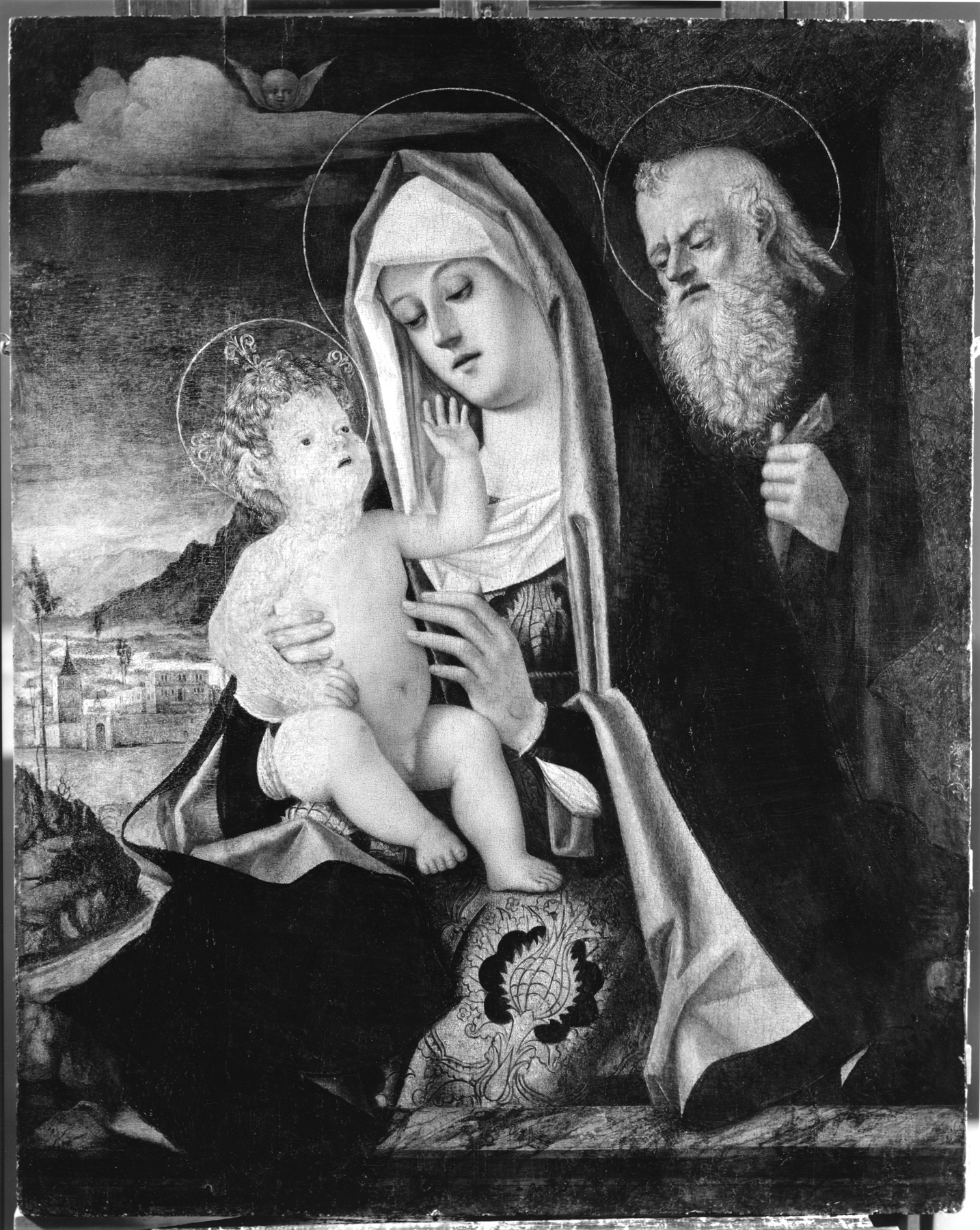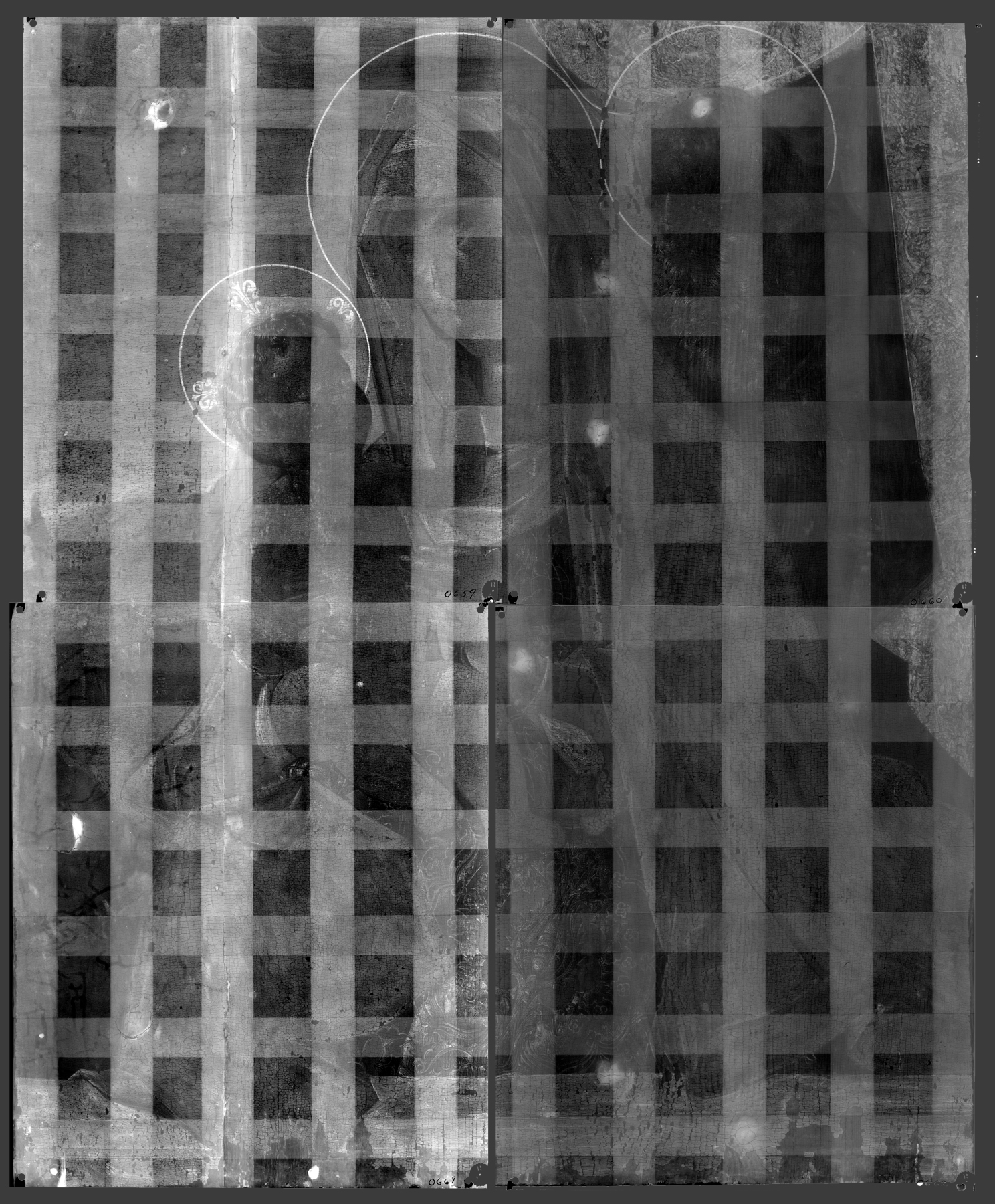The Holy Family
(Renaissance Europe )
Against an open sky and distant cityscape the Madonna, wearing an elaborately embroidered mantle, tenderly holds the Christ Child on her lap. The Christ Child reaches toward his mother’s face as the elderly Saint Joseph, Mary’s husband, looks on from behind. A cherubim (from a rank of angels so close to God that they are nearly disembodied) appears from a cloud above.
Certainly intended for a domestic interior, the poses of the Madonna and Child are borrowed from a famous composition by the Venetian artist Cima da Conegliano (1459-1517). The execution, however, cannot be attributed to Cima or his workshop, and the painting is likely by a later follower.
Provenance
Provenance (from the French provenir, 'to come from/forth') is the chronology of the ownership, custody, or location of a historical object. Learn more about provenance at the Walters.
Marquess Filippo Marignoli, Rome and Spoleto, until 1898 [mode of acquisition unknown]; Marquess Francesco Marignoli, 1898 [mode of acqusition unknown]; Don Marcello Massarenti Collection, Rome, 1899 [1900 catalogue supplement: no. 9, as Buonconsiglio]; Henry Walters, Baltimore, 1902, by purchase; Walters Art Museum, 1931, by bequest.
Geographies
Italy, Venice (Place of Origin)
Measurements
Painted surface H: 35 7/16 x W: 27 11/16 x D excluding cradle: 1/4 in. (90 x 70.3 x 0.7 cm)
Credit Line
Acquired by Henry Walters with the Massarenti Collection, 1902
Location in Museum
Not on view
Accession Number
In libraries, galleries, museums, and archives, an accession number is a unique identifier assigned to each object in the collection.
In libraries, galleries, museums, and archives, an accession number is a unique identifier assigned to each object in the collection.
37.708




